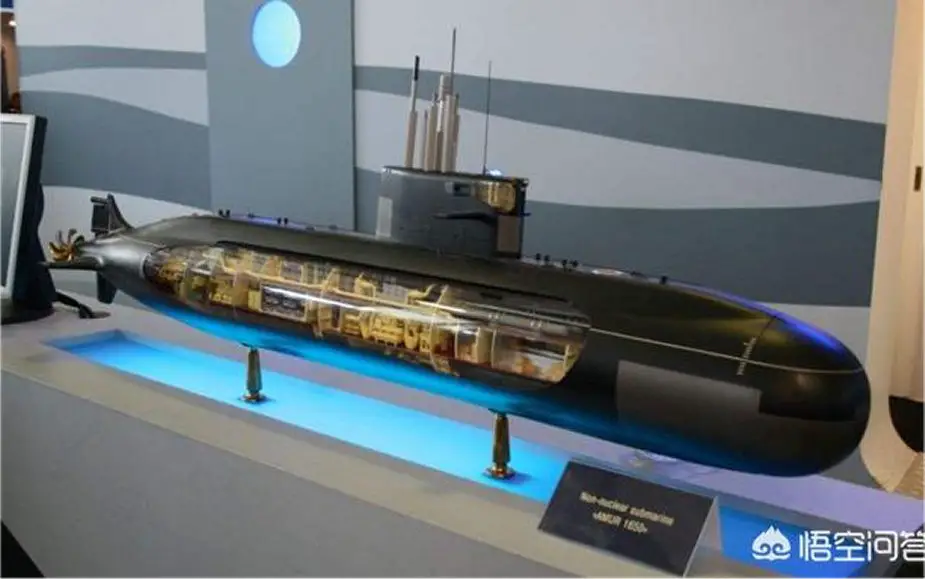Breaking news
Russian Rubin Design Bureau says Indian Project-75 submarine unrealistic.
According to information published by the Economic Times on August 25, 2022, Andrey Baranov, the Deputy Director General of Rubin Design Bureau has said that Project 75I is unrealistic as the desired technologies cannot be made available within the strict timelines being defined.
Follow Navy Recognition on Google News at this link
 A model of the Russian Amur 1650 class submarine (Picture source: wukong.toutiao)
A model of the Russian Amur 1650 class submarine (Picture source: wukong.toutiao)
The Project 75 (India)-class submarines, or P-75I, for short, are a planned class of diesel-electric submarines, which are to be built for the Indian Navy. The P-75I class is a follow-on of the P-75 class submarines of the Indian Navy.
Under this project, the Indian Navy intends to acquire six conventional, diesel-electric attack submarines, which will also feature advanced capabilities - including air-independent propulsion (AIP), ISR, special operations forces (SOF), anti-ship warfare (AShW), anti-submarine warfare (ASW), anti-surface warfare (ASuW), land-attack capabilities and other features. All six submarines are expected to be constructed in India, under the Make in India initiative.
On 21 January 2020, the Government of India (GoI) shortlisted two Indian shipyards - Larsen & Toubro (L&T) and Mazagon Dock Limited (MDL), as the two Indian finalists in P-75I.
Concurrently, the GoI also shortlisted five foreign Original Equipment Manufacturers (OEM), as finalists in P-75I - ThyssenKrupp Marine Systems (TKMS) of Germany, Rubin Design Bureau of Russia (Amur-1650 class submarine), Navantia of Spain, Naval Group of France, and Daewoo Shipping & Marine Engineering (DSME) of South Korea.
The Amur-class submarine (named for the Amur River), is one of the latest Russian submarine designs. It is advertised as an export version of the Lada class, a modernized version of the Kilo-class submarine with improved acoustic stealth, new combat systems, and an option for air-independent propulsion (AIP).
As advertised, the Amur-1650 is larger and intended for longer missions. The Amur-950 is armed with a VLS missile system capable of salvo-fire at multiple predesignated targets.
Sonar signatures of these submarines are several times lower than the older Kilo-class submarines. Both designs are equipped with electronic warfare armament of the newer generation created on the basis of the latest science and technology.
They can be outfitted with AIP fuel cells, considerably improving submerged endurance and range. AIP capability can be added in a hull extension plug either during new build construction or as a refit to existing boats.
The builder said these vessels can operate in all areas of the world except areas with solid ice cover, in all weather conditions, and in shallow and deep water.





























